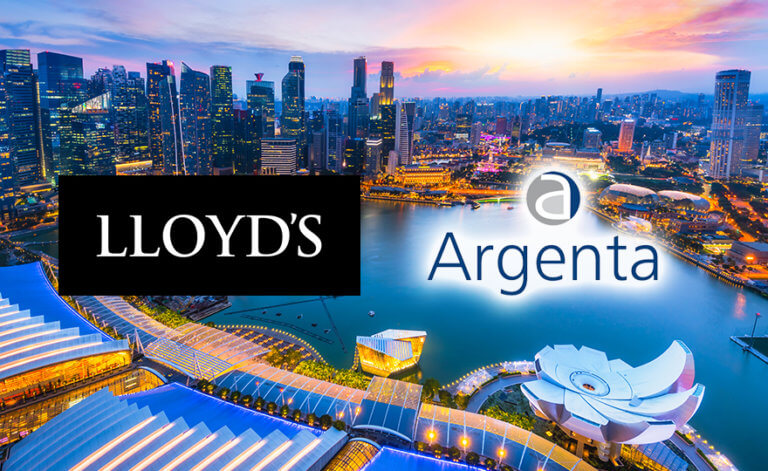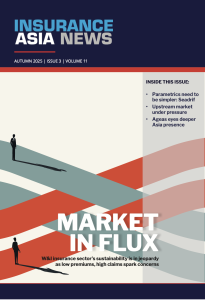Lloyd’s Asia upbeat on growth despite Argenta exit
August 10 2022 by Andrew Tjaardstra
Lloyd’s Asia is optimistic for the future despite Argenta becoming the latest syndicate to exit the Singapore market following its exit from Lloyd’s China in Shanghai late last year.
Argenta Underwriting Asia (AUA) announced on August 8 that it is winding up its Singapore operations. Andrew Annandale, Argenta’s group chief executive, announcing the closure blamed the decision on “current underwriting conditions” that “don’t offer us the opportunity to build upon what we have achieved to date in Singapore in respect of the direct business available to us.”
Argenta is not the first syndicate to leave Lloyd’s Asia in recent years. CNA Hardy left Lloyd’s Asia in November 2018 while ArgoGlobal left in September 2019. Tokio Marine Kiln exited its Lloyd’s Hong Kong business, in October 2018.
Despite the exits, Lloyd’s said the outlook is positive and that there could soon be some market entries over the next 18 months.
Thomas Haddrill, interim chief executive of Lloyd’s Asia and country manager of Singapore, said: “In 2021, Lloyd’s Asia grew to over S$1 billion (US$730 million) in GWP for the first time, with an enviable net combined ratio in the mid-70s. This year our platform has continued to invest in senior and fully empowered underwriters and specialists in claims and actuarial fields to support further growth and we look forward to welcoming several new joining syndicates in 2022 and 2023.”
“Lloyd’s Asia growth in recent years has benefitted from strong strategic partnerships with brokers and managing agents. Lloyd’s Asia’s capacity in marine, energy, political risk and property will continue to be delivered by a large number of the syndicates on the platform,” he added.
Argenta’s decision comes as some rival syndicates, including Markel have been growing strongly in the region. Simon Wilson, London-based president of Markel International, told InsuranceAsia News (IAN) in March that it is targeting US$100 million gross written premium (GWP) in the region by the end of next year.
 |
“This year our platform has continued to invest . . . and we look forward to welcoming several new joining syndicates in 2022 and 2023.” Thomas Haddrill, Lloyd’s |
Argenta reshuffle
Argenta’s Singapore team was based alongside other syndicates in the Lloyd’s hub CapitaGreen and offer lines including marine, offshore energy, offshore construction, terrorism, property treaty reinsurance, trade credit and political risk.
The company employs 14 people in Singapore whose roles are under threat. AUA is overseen by Scott Sykes has been at Argenta in Singapore since 2006 and took over as principal officer in September 2021. He said in a statement that some Asia business could eventually be written through its Sydney office or be repatriated to London.
Lloyd’s said that it is working with Argenta to ensure a “smooth and professional” transition and all existing policies written from Singapore remain valid. Lloyd’s confirmed that Argenta is well capitalised and will meet all valid claims which are underpinned by the Lloyd’s Chain of Security and the Central Fund.
In contrast to Singapore, Argenta has said that it will continue to operate in Australia and redirect the business through Lloyd’s in London rather than Singapore.
“The Australian business, Argenta Underwriting Australia, is continuing as usual and has six people in its team,” said Richard Hardy, the underwriting director overseeing the firm’s Sydney operation.
However, the Australian business will need some adjustments with Argenta saying it will be restructured to report directly into its London headquarters, subject to regulatory and Lloyd’s approvals.
The unit was set up by Tim Higgins in October 2015 as a Singapore registered business. Higgins left the business earlier this year.
As the Asia Pacific (re)insurance market and companies seek to place their capital towards more profitable lines, we can expect to see more ups and downs at Lloyd’s multiple players, but with markets recovering from Covid-19 and the middle class in the region growing, Asia still seems a safe bet.
-
1.1 renewals steady despite delays as excess capacity drives softer pricing across APAC
- December 22
Reinsurers and brokers report competitive pricing, stable terms, and selective loss impacts, with abundant capacity reshaping negotiations and, in some cases, cedents pushing for up to 20% rate reductions.
-
AI can offset carbon risk gaps for insurers, with APAC at the forefront
- December 19
Carbon offset platform market industry value has been put at US$190.7bn, but that figure is forecast to grow to US$1.6trn in the next decade.
-
Rise of zombie companies, supply chain nerves propel demand for trade credit insurance
- December 18
Asia is set to be the largest contributor to insolvency increases accounting for half of the global rise in 2025, Allianz Trade’s Hassan Omaish says.
-
‘Humming’ India to be priority for insurers in 2026 amid market reforms, GDP growth
- December 16
Move to allow 100% foreign ownership of insurance companies, and rapid economic growth, will drive a wave of dealmaking.
-
QBE | Elevating customer experience, humanising claims: QBE Asia’s ‘Solutions in a Box’
Vastly improving turnaround times and personalising service delivery, QBE Asia’s award-winning, end-to-end bundled claims solutions is a game-changer for the insurance industry.
-
Beazley | What does cyber protection look like from day 1 to day 600 and beyond?
Cybersecurity is no longer just an IT concern, but a governance issue that belongs on the boardroom agenda.
-
Sedgwick | Preparing for the next storm
Insurance industry needs to recalibrate, invest in innovation and strengthen systems, talent and data practices.
-
Peak Re | From climate modelling to market opportunity: Forging a new clarity on Southeast Asia’s climate risk
Southeast Asia's protection gap: a crisis of clarity, not just capital

